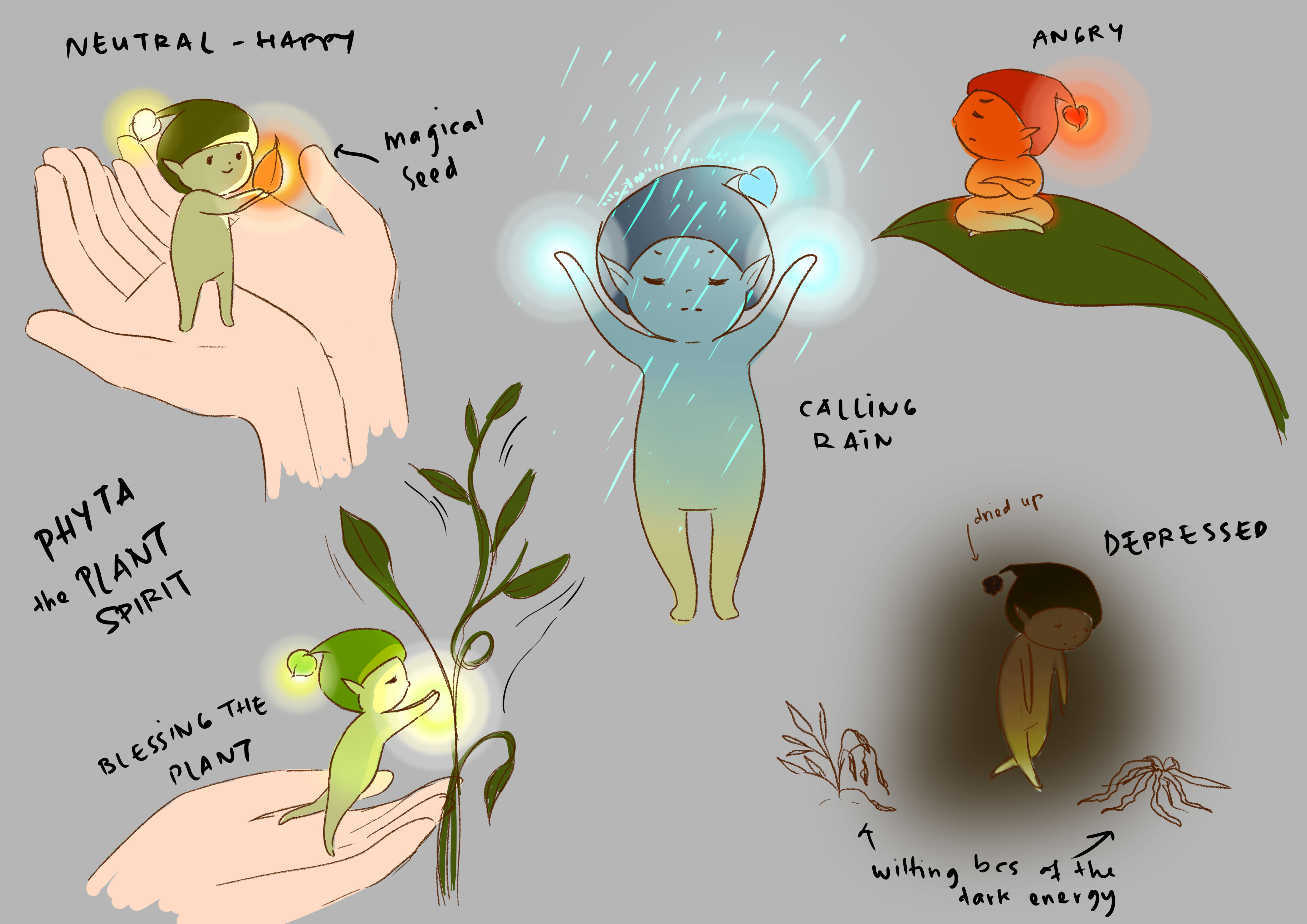
This work examines the uses of light and colours in signifying powers and otherworldly characteristics. The illustration visually describes the events in the story, presenting how the light and colours are used to show the power of the plant sprite. The shifting colour indicates different powers that are being wielded. The interaction between the sprite’s hands and the light emitted show that the sprite is wielding the power. The hands are not always glowing, so the audience knows that the power is not a constant thing, but something to be called upon and generated. The presence and intensity of the light signify the well-being of the sprite. When it’s dim, the sprite is tired, weak, or sad, and the contrary applies. When the sprite loses its power and the light diminishes, it brings calamity to the surrounding. The power is turned into having bad effects on the surrounding.
This work is similar to the game Harvest Moon DS (2005, by Natsume, Marvelous Entertainment Inc), where there are sprites that can help the main farmer character in daily farming activities after the main character found the lost sprites. In the game, there are 101 sprites, categorised under 10 groups, differentiated by colours. For example, the blue team is responsible to water the crops, while the green team is to harvest the crops. However, these sprites do not glow and the player has to exchange some medals to ‘rent’ the help of the sprites. A similar theme is also shown in the movie Barbie in Fairytopia: Magic of the Rainbow (2007, Universal Pictures), where the fairies are categorised for their different power by colour. Additionally, the way they harness their power is shown through light.
By examining my work and reference works, I reflected that light can be more than just an element of visibility. It can signify a great number of things if used meaningfully and strategically. It can solidify and create an impact on the visualization of stories, inviting the audience to pay attention and are convinced with the story and characters.
Note: linked file contain the initial idea iteration that ended up not being used for the final entry.
Downloads:
-
Download File: anw11-charsketch1-initial-idea.jpg
Download File: anw11-initialidea-bulletpoints.jpg
Download File: anw11-charsketch3-sprite.jpg
Download File: anw11-charsketch2-initial-idea.jpg
About This Work
By Eugenia Cynthiaputri
Email Eugenia Cynthiaputri
Published On: 07/06/2022
